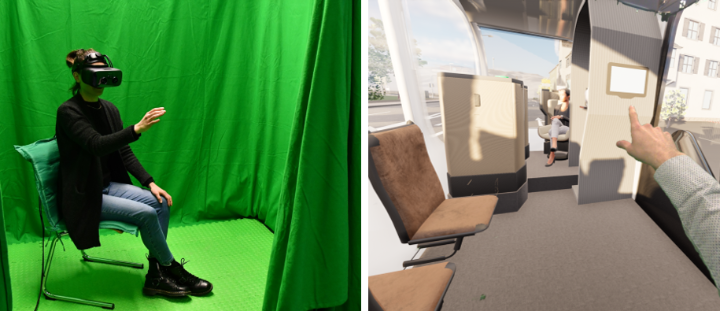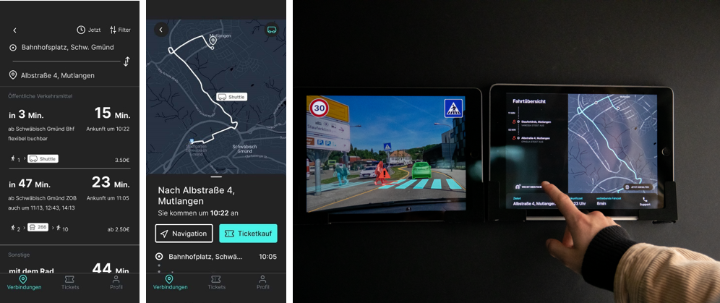How can we make urban mobility safer and more sustainable? To investigate this, the interdisciplinary SAVeNoW consortium created a digital twin of the city of Ingolstadt and operated a complex traffic simulation model for almost three years. The digital twin depicts the effects of specific traffic measures on traffic flow and allows them to be tested virtually before they are implemented in reality. The researchers used the model to analyze individual traffic situations, individual traffic behavior and new mobility concepts. The focus was on issues relating to automated and networked mobility.
Inspiring citizens to get involved in sustainable mobility concepts.
Alongside the development and operation of the digital twin, SAVeNoW addressed questions about the social acceptance of new transportation concepts. "With an average of less than 1.5 people per vehicle, private cars are extremely underutilized," explains Fabian Schlichtherle, research assistant to Prof. Dr. Wolfram Remlinger at the Institute for Engineering Design and Industrial Design (IKTD) at the University of Stuttgart. "Automated driving will contribute to smoother traffic flow, but the total number of vehicles on the roads must also fall. To put it very simply, doubling the occupancy rate would reduce current road traffic levels by half. This assumes that individuals are willing to share their journeys with others."
Vehicle interiors with different levels of comfort
As part of the project, the IKTD research team developed concepts to make the interiors of shared vehicles more attractive. To this end, the researchers first determined the requirements and expectations of potential users with regard to future mobility concepts. Based on this, a vehicle interior design was developed in which different comfort levels were accommodated in a shared automated vehicle. This was then brought to life interactively in the mixed reality simulator specially developed for the project. Citizens were able to see the concepts for themselves in the project's own showroom.
Book a ride - get in - go
Communication and interaction in and with the vehicle were also the subject of research at the University of Stuttgart. How can I book a test ride? How can I gain access to the vehicle? Where can I get information about the journey? The team tested prototypes of a Mobility-as-a-Service app and several information displays in a real vehicle trial.
"The models and prototypes developed in the project will continue to be used beyond the scope of the project to tackle the many questions that still need to be clarified regarding the shared use of automated vehicles," says Fabian Schlichtherle.
SAVeNoW: A digital twin for Ingolstadt
A total of 13 project partners from industry and science worked on SAVeNoW from March 2021 to December 2023. The project was coordinated by AUDI AG. The project funding volume amounted to approx. 11 million euros, of which approx. 7.7 million euros came from public funding from the Federal Ministry for Digital and Transport (BMDV). SAVeNoW stands for “Funktions- und Verkehrs-Sicherheit für Automatisierte und Vernetzte Mobilität – Nutzen für die Gesellschaft und oekologische Wirkung”.
In addition to the results from the University of Stuttgart mentioned here, SAVeNoW dealt with many other issues relating to a digital twin for the transportation of the future. Interested parties can explore all the research results [de] interactively at a special website.



